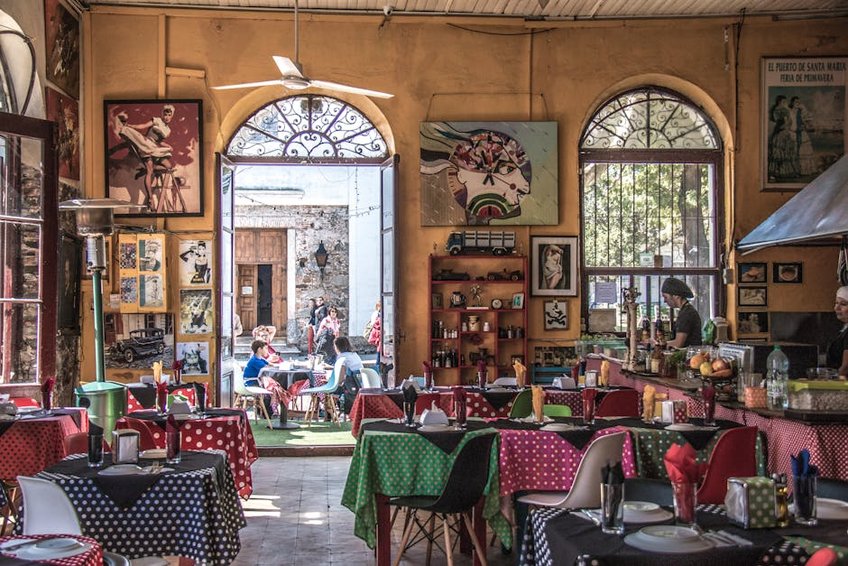Uruguay Colonia del Sacramento Colonial Town: Historic Charm on the River
Uruguay Colonia del Sacramento Colonial Town offers a beautifully preserved glimpse into South America’s colonial past with its cobblestone streets and UNESCO-recognized architecture. This destination combines Portuguese and Spanish influences across a compact historic quarter that visitors explore comfortably within one or two days. Your guide covers essential planning tips, must-see attractions, and cultural insights for maximizing this unique travel experience.
Essential Historical Background
Colonia del Sacramento’s foundation dates to 1680 when Portuguese settlers established a strategic outpost overlooking the Río de la Plata. The town changed hands repeatedly between Portuguese and Spanish forces throughout the 18th century, creating its distinctive architectural blend. This turbulent history shaped the barrio histórico’s unique character that attracts modern travelers.
UNESCO World Heritage Status
UNESCO designated the historic quarter a World Heritage site in 1995 for its exceptional urban layout and colonial buildings. The recognition highlights how the town preserves original street patterns from both Portuguese and Spanish colonial periods. This status ensures ongoing preservation efforts maintain authenticity for future generations.
- Portuguese colonial architecture features typical military designs with thick walls and small windows for defense purposes.
- Spanish influences appear in later additions including courtyard houses and religious structures built after territorial changes.
- The street grid demonstrates both Portuguese irregular planning and Spanish formal grid systems within different sectors.
- Budget travelers spend $50-80 daily using ferry promotions, street food, and free walking tours while staying in hostels outside the historic center.
- Mid-range visitors allocate $100-150 daily for standard hotels, restaurant meals, museum entries, and guided tours within the colonial town.
- Luxury experiences cost $200-300 daily featuring boutique hotels, fine dining, private guides, and special access to historical sites.
- Uruguay Ministry of Tourism
- UNESCO World Heritage Centre
Geographical Setting and Climate
Colonia del Sacramento occupies a small peninsula extending into the Río de la Plata opposite Buenos Aires, Argentina. The riverfront location creates moderate temperatures ranging from 45°F to 85°F (7°C to 29°C) throughout the year. This positioning made it historically valuable for controlling river trade routes.
Humidity remains relatively high given the waterfront setting, particularly during summer months from December through February. Winter visits from June to August bring cooler conditions perfect for extensive walking tours without overheating. The compact historic center measures approximately 500 by 300 meters, easily navigable on foot.
Cultural Significance Today
Modern Colonia del Sacramento serves as both a tourist destination and active community of approximately 27,000 residents. The colonial town represents Uruguay’s multicultural heritage through museums, festivals, and daily life. Local preservation laws prevent modern construction within the historic quarter, maintaining its time-capsule atmosphere.

Alt: “colonia-del-sacramento-colonial-architecture-cobblestone-streets-river”
Uruguay Colonia del Sacramento Colonial Town – Planning Your Trip
Planning your Uruguay Colonia del Sacramento Colonial Town visit requires considering seasonal weather patterns and advance booking for popular accommodations. The destination works well as a day trip from Buenos Aires or overnight stay to experience evening ambiance. Your itinerary should balance historic site visits with leisurely exploration of the picturesque streets.
Best Time to Visit Colonia del Sacramento
Visit between March and May or September through November for ideal weather conditions averaging 60-75°F (15-24°C) with minimal rainfall. These shoulder seasons provide comfortable temperatures for walking tours while avoiding summer crowds and higher prices. Winter months from June to August see fewer tourists but require warmer clothing for 45-60°F (7-15°C) temperatures.
Summer visits in December through February bring hot conditions reaching 85°F (29°C) with higher humidity and more visitors. This period coincides with South American school holidays, increasing demand for hotels and tours. Early morning and late afternoon exploration works best during summer heat.
Budget Planning and Costs
Budget considerations vary significantly between day trips and overnight stays at this Uruguay destination.
Essential Preparation Checklist
Pack comfortable walking shoes with good grip for uneven cobblestone streets throughout the historic quarter. Bring layered clothing suitable for changing weather conditions, including a light jacket even in summer months. Camera equipment and portable power banks prove essential for capturing the photogenic landscapes.
Secure necessary documentation including passport validity for border crossings if visiting from Argentina. Book ferry tickets two weeks in advance during peak seasons to ensure preferred departure times. Learn basic Spanish phrases for enhanced interaction with local shopkeepers and guides.
Top Attractions and Activities
Colonia del Sacramento’s compact historic quarter contains numerous well-preserved sites within easy walking distance of each other. The barrio histórico showcases colonial architecture, museums, and scenic viewpoints across its twelve-hectare area. Most attractions concentrate along Calle de los Suspiros and surrounding streets near the riverfront.
Must-See Highlights
The iconic Street of Sighs (Calle de los Suspiros) features original Portuguese houses with stone walls and wooden beams dating to the 17th century. This photogenic lane measures just 100 meters long but captures the colonial atmosphere perfectly, especially during golden hour. Visit early morning to avoid crowds and capture the best photographs.
Basílica del Santísimo Sacramento stands as one of Uruguay’s oldest churches, originally constructed in 1680 and rebuilt after multiple conflicts. The simple colonial design includes a single nave and wooden ceiling typical of Portuguese religious architecture. Entry remains free with suggested donations supporting maintenance.
The Municipal Museum occupies a historic Portuguese house displaying artifacts from Colonia’s colonial period across eight exhibition rooms. Collections include religious art, military equipment, and domestic items from the 17th-19th centuries. Admission costs approximately $2 USD with combined tickets available for multiple museums.
Hidden Gems and Local Favorites
Portuguese Museum features an extensive collection of Portuguese colonial artifacts in a beautifully restored 18th-century house near the riverfront. This lesser-visited site provides deeper insight into daily life during the Portuguese occupation period. The museum garden offers quiet seating areas away from main tourist paths.
Regional Archive preserves historical documents including maps, letters, and official records from Colonia’s founding through modern times. Researchers can access materials by appointment while casual visitors view rotating exhibits in the public gallery. This institution operates weekdays with free admission.
Local artisans maintain workshops along Calle Real where visitors observe traditional crafts including leatherwork and silver jewelry making. These small businesses typically don’t advertise heavily but offer authentic souvenirs distinct from mass-produced items. Engaging with craftspeople provides cultural exchange opportunities.
Walking Tours and River Activities
Guided walking tours depart regularly from the tourist office near Portón de Campo, the reconstructed city gate. Knowledgeable guides share historical context and anecdotes during 90-minute circuits covering major landmarks. Independent exploration works equally well using mapped routes available at information centers.
Waterfront activities include sailing excursions, kayak rentals, and sunset viewing from various points along the river promenade. The old city wall provides elevated perspectives across the Río de la Plata toward Buenos Aires. Evening strolls along the illuminated ramparts create romantic atmospheres.
Practical Travel Information
Colonia del Sacramento welcomes visitors through multiple transportation options including ferries, buses, and regional flights. The compact nature of the historic town makes everything accessible within 15-20 minutes walking from the transportation terminal. Advance planning ensures smooth transitions between arrival points and accommodations.
| Accommodation Type | Features and Locations | Price Range (USD) |
|---|---|---|
| Historic Center Hotels | Boutique properties in restored colonial buildings with river views and breakfast included | $120-250 |
| Modern District Hotels | Chain hotels with parking facilities, pools, and business centers 10-15 minute walk from historic quarter | $80-150 |
| Guesthouses | Family-run establishments with local charm, home-cooked meals, and personalized service | $50-100 |
| Hostels | Budget accommodations with dormitory beds, kitchen access, and social atmospheres | $20-40 |


